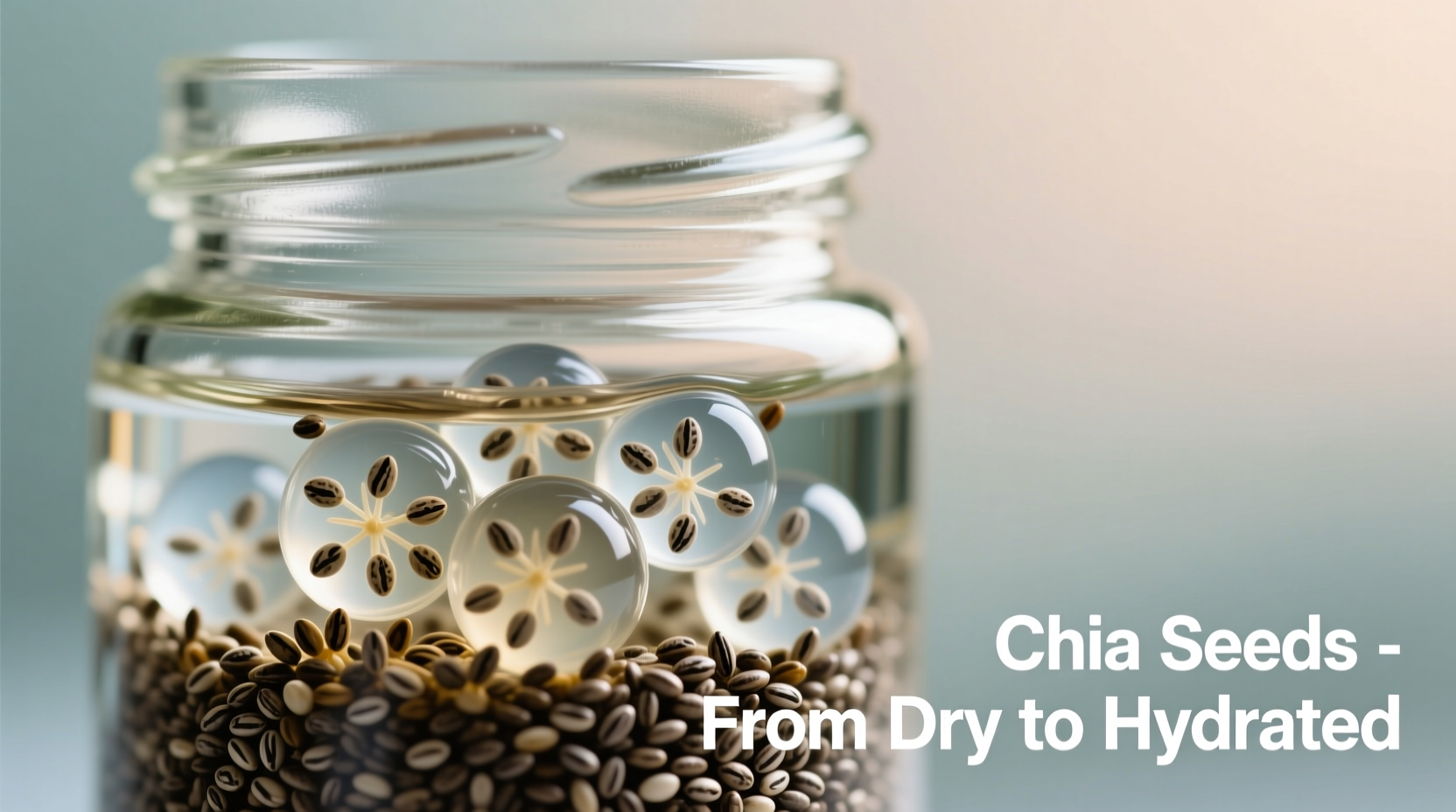Chia seeds transform from dry granules into a gel-like consistency when hydrated, making them incredibly versatile for both simple daily additions and creative recipes. Unlike many "superfoods" that require complex preparation, chia seeds can be incorporated into your diet with minimal effort while delivering significant nutritional benefits including omega-3 fatty acids, fiber, and protein.
Why Proper Chia Seed Preparation Matters
Consuming chia seeds improperly can lead to digestive discomfort. According to the National Institutes of Health, chia seeds absorb 10-12 times their weight in water. When eaten dry without adequate fluid intake, they can expand in your digestive tract causing potential blockages. Proper preparation ensures you receive maximum nutritional benefits while avoiding common pitfalls.
| Preparation Method | Water Ratio | Soaking Time | Best For |
|---|---|---|---|
| Basic Gel | 9:1 (water:seeds) | 15-30 minutes | Smoothies, sauces |
| Chia Pudding | 4:1 (liquid:seeds) | 2+ hours | Breakfast, desserts |
| Dry Sprinkle | N/A | Immediate | With plenty of fluids |
5 Beginner-Friendly Ways to Eat Chia Seeds
1. The Hydrated Gel Method (Safest Approach)
Mix 1 tablespoon of chia seeds with 9 tablespoons of water in a jar. Stir well and let sit for 15-30 minutes, stirring occasionally to prevent clumping. This creates a neutral-flavored gel you can add to:
- Smoothies (replaces banana for thickness)
- Salad dressings (creates emulsion)
- Oatmeal (adds protein without changing flavor)
2. Overnight Chia Pudding
Combine 3 tablespoons chia seeds with 1 cup of your preferred milk (dairy or plant-based). Add 1 teaspoon vanilla extract and sweetener to taste. Refrigerate for at least 2 hours or overnight. This preparation:
- Creates a pudding-like texture
- Maximizes nutrient absorption
- Provides sustained energy throughout morning

3. The Water Infusion Technique
For those seeking hydration benefits, add 1 tablespoon chia seeds to 16 ounces of water. Let sit for 15 minutes with occasional stirring. This creates a natural electrolyte drink similar to traditional Mexican agua de chia. According to anthropological research documented by the National Academies Press, this preparation has been used for centuries by indigenous communities in Mexico and Guatemala as a hydration solution during physical labor.
Advanced Chia Seed Applications
Egg Replacement in Baking
Mix 1 tablespoon chia seeds with 3 tablespoons water. Let sit for 5 minutes until gel forms. This chia "egg" works exceptionally well in:
- Muffins and quick breads
- Vegan pancakes
- Binding meatless burgers
Unlike flax eggs, chia eggs don't impart noticeable flavor, making them ideal for delicate recipes.
Energy Boosting Pre-Workout
Combine 1 tablespoon chia seeds with 8 ounces coconut water and a squeeze of lime 30 minutes before exercise. The slow-release carbohydrates and electrolytes provide sustained energy without digestive upset. Sports nutrition research published in the Journal of the International Society of Sports Nutrition confirms this approach enhances hydration status during physical activity.
Timing and Portion Guidance
The optimal daily amount of chia seeds is 1-2 tablespoons (15-30g) according to dietary guidelines from the USDA FoodData Central. Exceeding this amount without medical supervision may cause:
- Digestive discomfort (due to high fiber content)
- Potential medication interactions (particularly blood thinners)
- Nutrient absorption interference if consumed with certain minerals
For best results, consume chia seeds:
- With breakfast for sustained morning energy
- 30 minutes before workouts for hydration
- As an afternoon snack to prevent sugar cravings
Avoiding Common Mistakes
Many beginners make these errors when learning how to eat chia seeds properly:
| Mistake | Consequence | Solution |
|---|---|---|
| Eating dry without fluids | Throat/esophageal discomfort | Always consume with adequate liquid or pre-soaked |
| Overconsumption | Diarrhea or bloating | Start with 1 tsp daily, gradually increase to 1-2 Tbsp |
| Improper storage | Rancidity (seeds contain oils) | Store in airtight container in refrigerator |
Special Considerations for Different Diets
Chia seeds adapt beautifully to various dietary approaches:
- Keto diets: Use in moderation (1 tbsp provides 5g net carbs)
- Vegan diets: Excellent source of plant-based omega-3s
- Gluten-free: Naturally gluten-free binding agent
- Diabetic diets: Helps stabilize blood sugar when properly prepared
Troubleshooting Texture Preferences
If you dislike the gel-like texture of hydrated chia seeds:
- Grind them into flour using a coffee grinder
- Use in baked goods where texture disappears
- Try white chia seeds which have slightly less noticeable texture
- Blend soaked seeds thoroughly in smoothies











 浙公网安备
33010002000092号
浙公网安备
33010002000092号 浙B2-20120091-4
浙B2-20120091-4